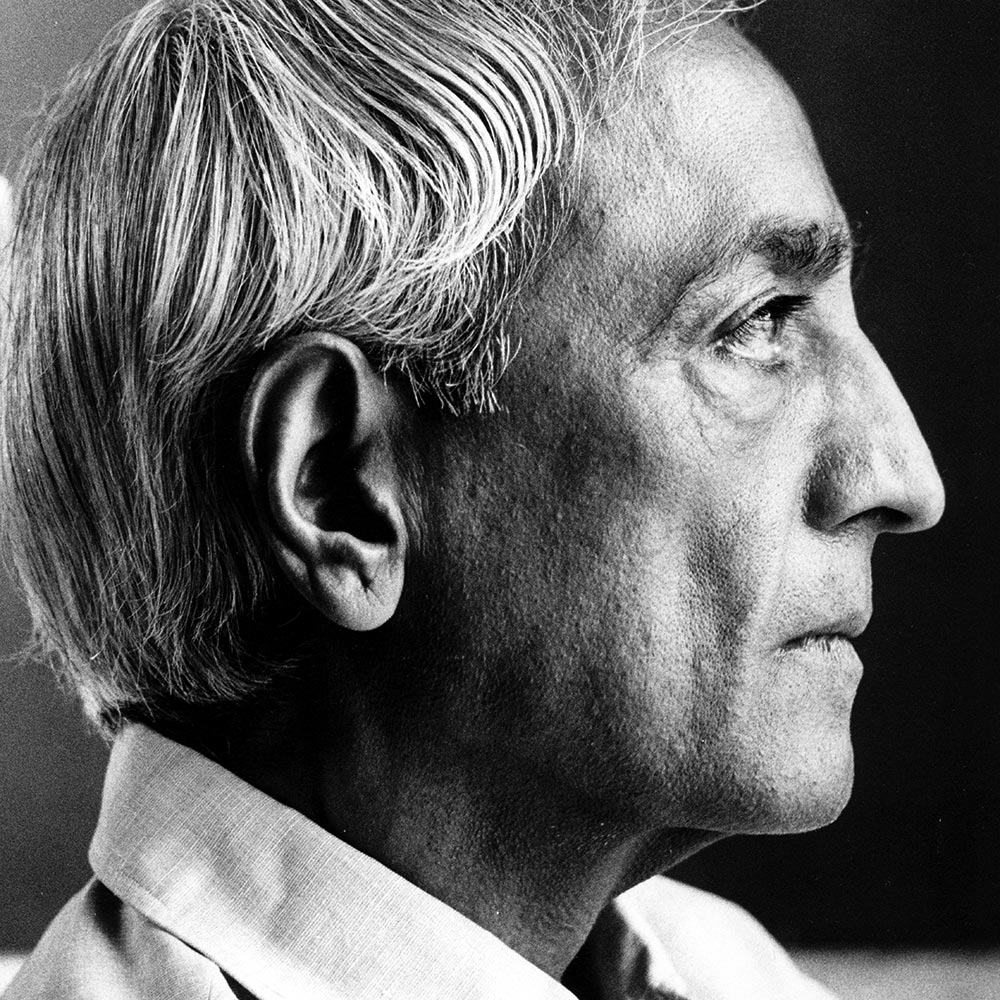
The Krishnamurti Foundations – The Source of the Authentic Teachings of Krishnamurti
The authenticity and accuracy of the teachings were of utmost importance to Krishnamurti. In the 1920s, he began to correct, revise and edit the typed versions of his talks because he did not want to depend on the ‘accuracy or inaccuracy of the stenographers’ (International Star Bulletin, 1928). He was aware of the misunderstandings and complications that arose because of interpretations that took place during the transcription process or due to different versions existing of the same talk. Therefore, over time, the process of transcription was tightened, with two or three stenographers recording the talks and the versions compared to produce the most accurate record possible.
The Star Publishing Trust (SPT), responsible for publishing Krishnamurti’s talks from the 1930s to the 1960s, took steps to discourage the unofficial distribution of texts, which stemmed from people taking their own notes during the talks and printing them. The official transcriptions of the talks were all checked by Krishnamurti, who spent long hours on the revision process, something he felt entirely necessary.
As the number of talks he gave increased, this process became too much for Krishnamurti to do alone. As his biographer Mary Lutyens recalled, ‘When the task became too heavy for him, Krishnamurti entrusted it to people whom he considered capable of the kind of English of which he approved while at the same time retaining his own true voice and meaning.’
One of the people Krishnamurti entrusted was D. Rajagopal, who was highly involved in the work of SPT. In 1948 he said, ‘The practice of circulating all sorts of notes that some well-meaning friends have been making may at some future time cause doubt about what Krishnaji really said and meant, and it is our primary concern to prevent that confusion and to enable people to read Krishnaji’s own words with the assurance of their correctness.’
Krishnamurti was clear about the difference between the spoken and written word, the following year saying, ‘Reading [the talks] in print and hearing them are two different matters: What appears in print must inevitably be edited, and for the editing of these talks it is essential that there should be no misrepresentation.’ Mary Lutyens, who began editing on Krishnamurti’s request, later put it: ‘The spontaneous spoken word of a verbatim transcript would not be acceptable for publication by an established publisher.’ Editors were carefully chosen with Krishnamurti’s involvement, who could be trusted to ensure authenticity of meaning whilst ‘reflecting his own highest standards of the English language.’ (Mary Lutyens, 1989)
The Krishnamurti Foundations were established in the late 1960s after the break from SPT, and the tradition of careful transcription and editing continued. More and more of Krishnamurti’s talks, discussions and conversations were recorded. The ability of those interested to listen to or watch an unedited recording increased with the evolution of technology, from reels to cassettes, to discs and online streaming.
At Krishnamurti Foundation Trust, a multi-stage system of verification was established to ensure that the transcripts of audio recordings are as accurate as possible. At least three different people are involved: a typist, a verifier, and a final verifier, each working to the same strict set of guidelines aimed at accuracy and consistency. These archival transcripts form the basis of the carefully edited material that is published today.
This diligent work of transcription, verification and editing remains essential. Unofficial notes and transcripts may no longer be distributed in paper form, but anyone can easily attribute words to Krishnamurti, edit them as they wish, and publish them online. Added to this, the rapid advances of artificial intelligence mean that within seconds a ‘Krishnamurti’ text can be produced, or even engage in dialogue with AI emulating Krishnamurti. There is a danger of AI becoming an easily distorted authority on what Krishnamurti said and meant. Krishnamurti made it clear that there are to be no interpreters of his teachings. He was speaking of human beings, but the notion equally applies to the AI ‘bots’ that already exist and, before long, video avatars that will look and sound no different from Krishnamurti himself.
Given the above, which highlights Krishnamurti’s clear urge for care not to distort, the striving for accuracy by those involved at Krishnamurti Foundations, and the challenge that AI represents, the Foundations (and carefully chosen publishers) are the only guaranteed resource for the authentic teachings of Krishnamurti. They uphold a long tradition, started by Krishnamurti himself, of careful editing and producing accurate material. This is not a statement of authority but of the painstaking efforts to ensure the quality, accuracy and non-interpretation of these timeless works.
